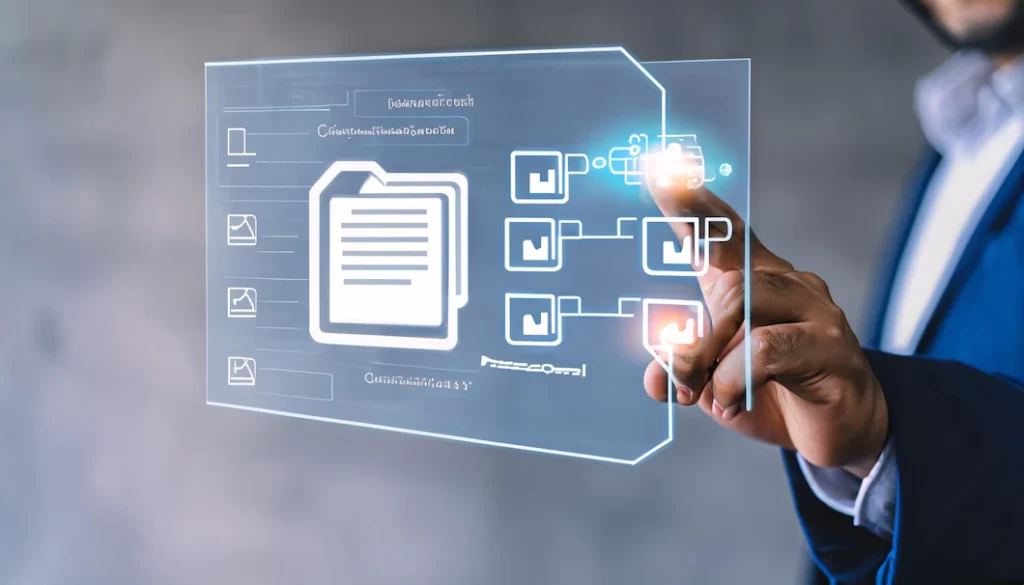Everything You Need To Know About eContracts

Table Of Contents
In the fast-paced landscape of the digital era, the significance of understanding electronic contracts, or eContracting, cannot be overstated for business success.
An electronic contract is a revolutionary agreement drafted, negotiated, and executed entirely in the digital realm. In a world where transactions unfold at the speed of a click, embracing eContracting is more than a trend—it’s a strategic imperative.
The beauty of econtracts lies in their ability to transcend the constraints of traditional pen-and-paper agreements. The cumbersome processes of printing, signing, and mailing are replaced with a seamless online workflow. This not only expedites the contracting lifecycle but also opens the door to a myriad of advantages.
eContracting is implemented through digital platforms and software designed for seamless contract creation, negotiation, and execution. Businesses leverage specialized eContracting tools that facilitate the drafting of contracts, allow real-time collaboration for negotiations, and enable electronic signatures for authentication.
These platforms often incorporate encryption and secure storage to ensure the integrity and confidentiality of contract data. Users can track the progress of contracts, receive notifications for key milestones, and streamline the entire process, eliminating the need for physical paperwork and expediting the lifecycle of agreements in the digital realm.
Prioritizing Automation Through Electronic Contracts

1. Speed and Efficiency
eContracting dramatically accelerates the contract lifecycle. From creation to negotiation and finalization, the entire process unfolds in the digital realm with unparalleled speed. Real-time collaboration, instant revisions, and electronic signatures eliminate the delays inherent in traditional pen-and-paper methods.
2. Cost Reduction
Bid farewell to the era of hefty printing, postage, and storage costs. eContracting slashes expenses associated with physical documentation, allowing businesses to redirect resources toward core operations. The streamlined workflow not only reduces direct costs but also minimizes the indirect expenses related to manual handling.
3. Enhanced Accessibility and Collaboration
Digital platforms for eContracting empower stakeholders to engage in negotiations from anywhere in the world. Whether it’s drafting, reviewing, or signing, the process becomes a seamless collaboration, unbound by geographical constraints. This accessibility enhances communication and fosters more dynamic and efficient interactions.
4. Sustainability and Environmental Impact
By minimizing reliance on paper, eContracting aligns with eco-friendly practices. The reduction in paper usage contributes to environmental sustainability, making it a choice that resonates with businesses committed to minimizing their carbon footprint. It’s a win-win, benefiting both the bottom line and the planet.
5. Security and Compliance
eContracting platforms prioritize the security of sensitive information. Through robust encryption measures and authentication protocols, businesses can ensure the confidentiality and integrity of their contracts. Furthermore, these digital solutions often incorporate compliance features, keeping businesses in adherence to regulatory standards and reducing legal risks.
Conclusion:
It is imperative to note that eContracting isn’t merely a technological upgrade; it’s a strategic imperative that reshapes how businesses navigate contractual processes. The advantages extend beyond efficiency gains to encompass cost savings, global collaboration, environmental responsibility, and fortified security—a powerful arsenal for businesses aiming not just to keep up but to thrive in the digital age. It also gives collateral benefits such as end-user satisfaction.
Read Also:
You May Also Like

December 14, 2023
4 Key Features To Look For In EPCR Software

July 2, 2021























